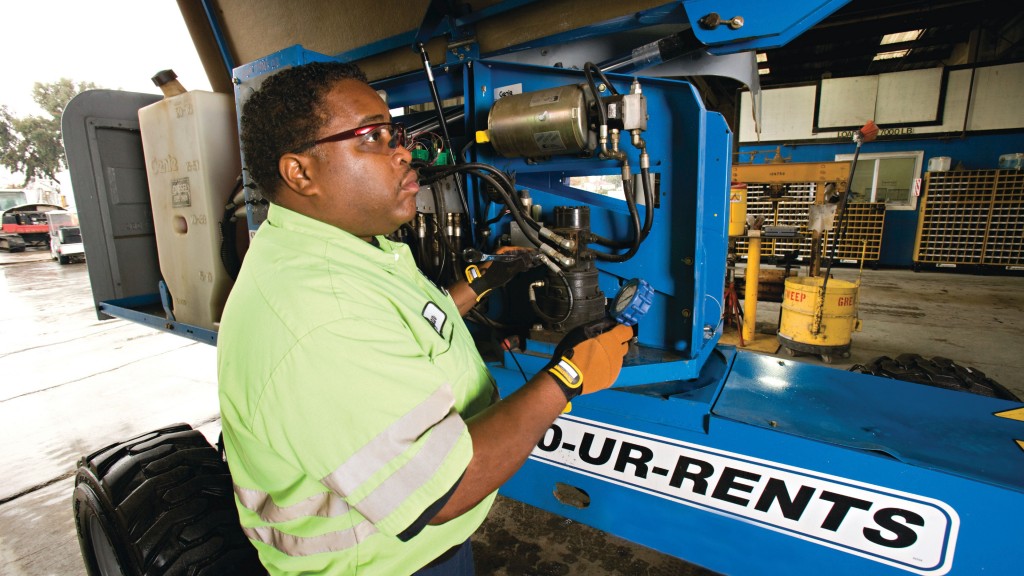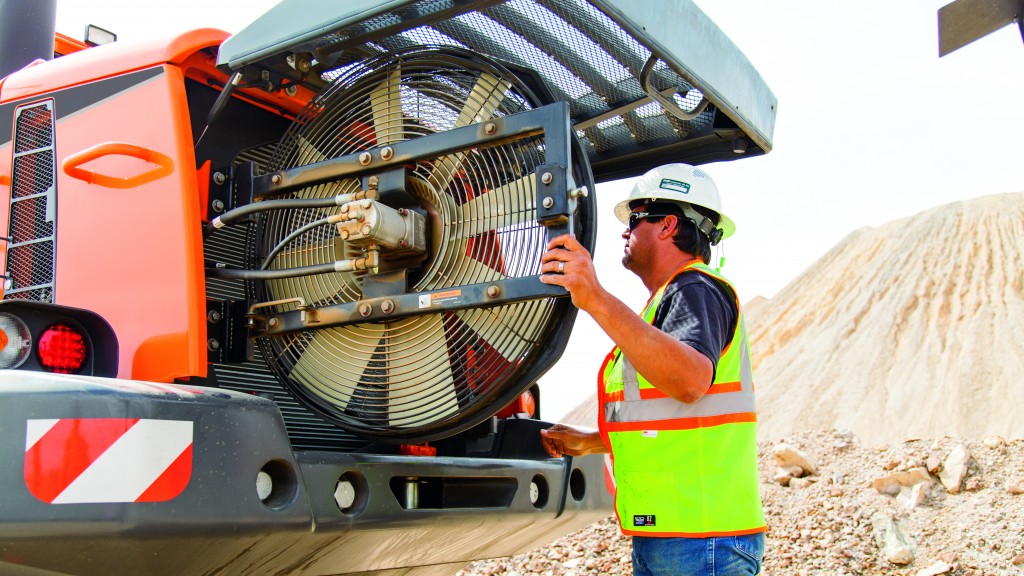7 tips to keep your heavy equipment running smoothly in cold weather

Readying construction equipment for frosty weather days can prepare worksite machines to work reliably all winter long. United Rentals has shared maintenance best practices to help keep excavators, aerial work platforms, skid steers, loaders and other equipment running smoothly and productively on worksites during the cold season.
Running equipment without proper winterization decreases performance and can put additional stress on parts. Although the machinery may seem to work fine, breakdowns - accompanied by large repair bills - could crop up come spring.
1. Follow manufacturer recommendations
Owner's manuals set out what care the equipment needs. When considering lubricants, for example, follow the guidelines for the type and viscosity of engine, transmission and hydraulic oils. Some manufacturers list recommended cold weather fluids for the engine crankcase, engine coolant and transmission.
The manufacturer might recommend letting the machinery warm to the operating temperature to prevent intake and exhaust valves from sticking. The warmed oils circulating through the systems help parts function normally. For example, because skid-steer loader engines run hot, Bobcat requires oil with less ash content and ultra-low-sulfur fuel for winter conditions. Also recommended is matching engine oil viscosity with the outside temperature and using low-temperature grease on pivot points.
2. Use the right fuel mix
In winter, fuel suppliers often switch from No. 2 (2D) diesel fuel to 1D. 2D provides greater heat value per gallon and has more paraffin wax for better efficiency. At low temperatures, however, the wax can gel and cause problems with fuel filters, lines and tanks. 1D consists of higher distillates (smaller molecules) and has better starting power for winter. However, it lacks the energy density needed for better fuel efficiency. To balance fuel efficiency and prevent gelling, fuel suppliers typically blend 1D and 2D for colder regions.
Good winterization practices for diesel engines include using an anti-gelling fuel additive to prevent crystallized wax from clogging the fuel system. Some anti-gelling additives also boost fuel combustion, break down and remove engine sludge and clean the fuel system. Refill the fuel daily to reduce condensation and water contamination.
3. Ensure proper tire inflation
Because cold weather causes tires to lose air, check tire pressure daily. This helps preserve tire quality, since under-inflation (and over-inflation) can cause uneven wear. Under- and over-inflation can also increase the likelihood of a blowout. Inflate tires in a heated area. Caterpillar and other manufacturers suggest inflating tires with dry nitrogen gas. The gas eliminates ice crystals and protects against deflation.
4. Check the battery
When temperatures drop to freezing, a battery's fully charged cranking capacity decreases by 35 percent, and the engine starting requirements increase. Sub-freezing temperatures magnify these effects. Rather than taking a chance on climbing into a cold cab and finding that the engine won't start, clean any dirt or corrosion from the battery with battery cleaner and a wire brush. Spraying a battery terminal protectant on the terminals will help keep corrosion away. Check the cables for cracks or breaks and clean any corrosion or dirt from the cable connectors. A defect in the charging system or loose connections can cause a battery to discharge. For maintenance-free batteries, use a load tester to check the charge.
5. Inspect the hydraulic system
Hydraulic systems require regular inspection and maintenance. Cold weather conditions can crack hoses and harden seals. Look for leaks and signs of damage. Use caution when working with pressured hydraulic systems. For example, John Deere recommends changing the hydraulic oil filter prior to the onset of cold weather to keep water and debris from entering the system. John Deere also advises checking hydraulic tank breathers, the tank suction filter, the hydraulic oil cooler and the final drive. Operating manuals list the operating temperature, fluid levels and fluid grades for the hydraulic system.
6. Inspect the engine coolant system
Winterization includes checking for radiator leaks, cracked belts and damaged hoses. Use a belt tension gauge to check belts for the proper tension. Exposure to oil, grease and contaminants can soften hoses and allow ruptures to form. Engine heat can make hoses brittle and prone to breaking. Check the coolant to make sure it remains at the right level, pressure and strength. Cold climates require a higher ratio of coolant to water to prevent freezing. Consult the operating manual for the correct ratio.
7. Store the equipment
Storing construction equipment protects sensitive electronic systems from freezing and thawing. With the right care, equipment can breeze through winter and remain in top condition to help a contractor hit the ground running when busy season starts.



